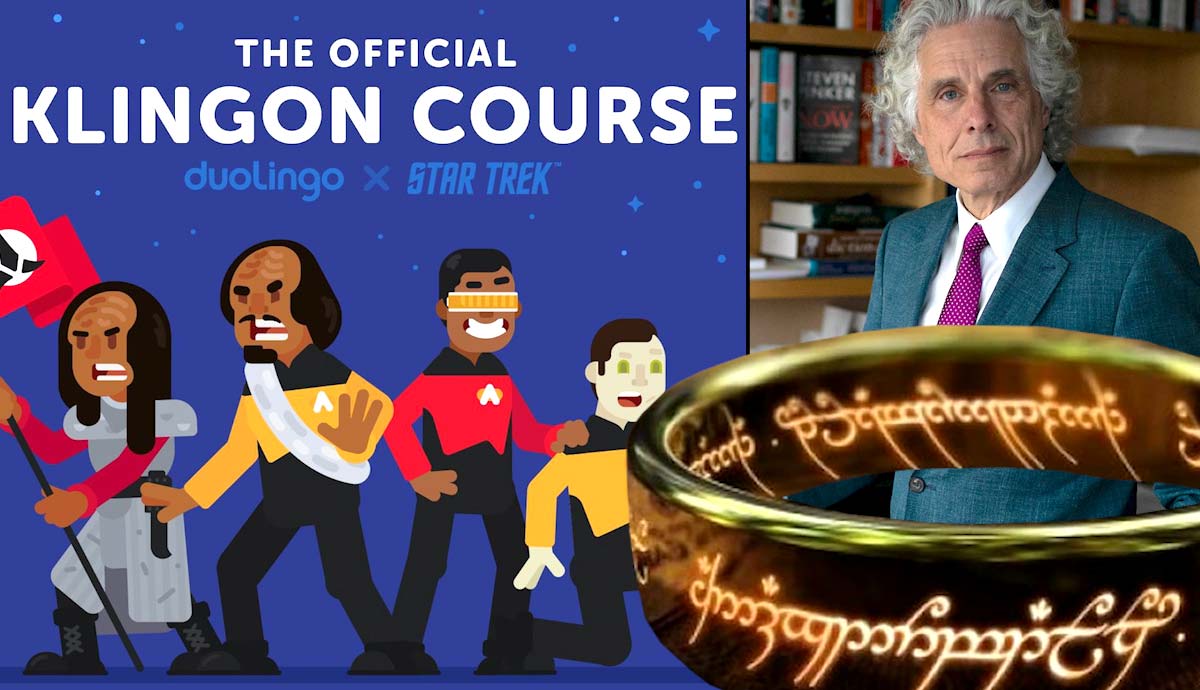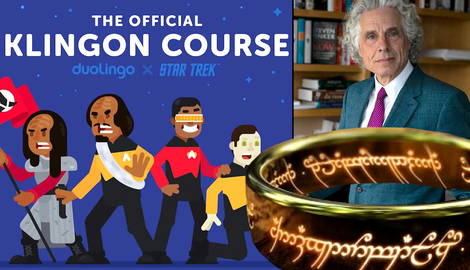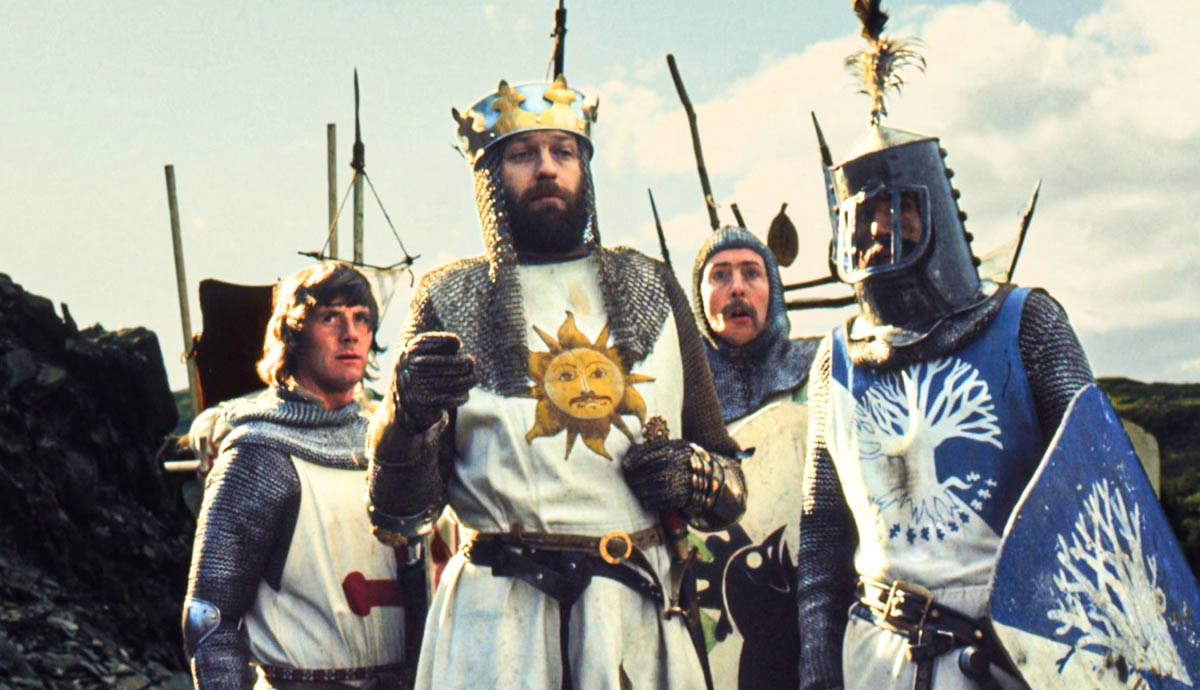
There are more than 7,000 languages in the world today. Some have hundreds of millions or even billions of speakers, while others are spoken by just a handful of older people, the last native speakers of that language. Virtually all these languages developed naturally without the dynamic of a controlled formation.
Some languages, however, are created from scratch by a person or a group of people designed for a particular purpose. In the modern era, these languages are known as constructed languages or conlangs.
Some of these languages were created for pragmatic, real-world purposes, such as Esperanto, designed as an international auxiliary language, but many of them were created by linguists just for fun or to appear in works of fiction. The latter contains many examples, such as Klingon from Star Trek or Dothraki from Game of Thrones. When the characters in the show speak these languages, they’re not just making a bunch of sounds. They’re speaking a real language with grammar and a fully-fledged lexicon!
Types of Conlangs

The first major category of conlangs is engineered languages, also known as engelangs. The reason these languages are created is to test hypotheses on how language actually works. Engineered languages, in turn, are subdivided into three major categories (with various other minor categories).
Of the engineered languages, logical languages generally exist in order to eliminate syntactic ambiguity. Philosophical languages are created to test philosophical theories, while experimental languages are constructed to understand how language influences thought and vice versa.
Auxiliary languages, also known as auxlangs, are designed for pragmatic, real-world applications and are intended to facilitate communication between groups of people. The most famous example of an auxiliary language is Esperanto.
The third major category of conlangs is artistic languages. Virtually all languages in fiction fall into this category. They are designed for aesthetic and phonetic reasons, often to be part of a wider fictional world. Klingon from Star Trek or Quenya and Sindarin from Lord of the Rings fall into this category. The sound of the languages reflects the idea of the people who speak them, as do the scripts that accompany these languages.
Blurring the Distinctions

Of course, conlangs don’t often fit neatly into the boxes designed to classify them. Many conlangs have features that cross these borders of distinction and muddy the waters of how we try to define them. This is often done not because of how the language works but how human beings have used the language.
Esperanto was designed as an auxiliary language, yet as many as 2,000 people speak it as a first language – not the intention of the language! Similarly, a member of the Klingon Language Institute attempted to raise his son with Klingon and English as his first languages. Thus, these languages move out of the confines of their creation.
Languages also change and evolve over time. Esperanto has been around for over a century and has undergone natural evolution as speakers make subtle changes in how they speak it as opposed to the prescriptive grammar first laid out by its inventor L. L Zamenhof. As such, modern Esperanto can no longer be strictly considered a wholly constructed language.
Language and Human Thought

Languages have been created to test their effect on human thought. This is based on the controversial Sapir-Whorf Hypothesis, which posits that language affects how the speaker thinks. The idea that language can limit or determine human thought is referred to as linguistic determinism.
To test this hypothesis, Suzette Haden Elgin created Láadan in 1982 as a feminist language specifically designed to express the ideas of women as opposed to many spoken languages today, which she argued are androcentric and geared towards expressing the ideas of men. They, thus, lack the ability to properly express the feminine perspective. Elgin included this language in her Native Tongue science fiction series.

In an attempt to suppress human thought in fiction, Newspeak stands out as the language used by Oceania in George Orwell’s 1984. Instead of expanding human thought, Newspeak is designed to limit it.
The linguist Steven Pinker, however, argues that human thought transcends language and that speakers naturally find ways to expand the way they speak to include thoughts that couldn’t be expressed before. This is perfectly evident in English, as the past few decades have provided a glut of slang to describe certain things with more precision. An example of this is the word “like,” which found significant use in California as a hedge to introduce an approximation or emphasize a point:
“It cost, like, five dollars!”
“He was, like, all up in my grill!”
Once associated with the Valley Girl demographic, it has spread throughout the United States and beyond. Despite existing stereotypes of being associated with people who are clueless and stupid, “Valspeak” shows significant creativity in how it is used. These changes happened outside the confines of grammatical and lexical laws.
If Steven Pinker is correct, then it is an important factor in conlangs in that if they are adopted and used, they will no doubt evolve and shed their title of being conlangs. It then begs the question, “Are Klingon and Esperanto still conlangs?”
A Deeper History of Conlangs

The modern era isn’t the only era to have produced the ideas of constructed languages. Roughly a contemporary of Plato, Pāṇini, a grammarian and philologist from ancient India, constructed a set of rules to explain how language works. The text of his work could be considered to be a mix of natural and constructed language. This was two and a half millennia ago!
The first mention of an actual constructed language in history appears in a text called Auraicept na n-Éces written by an Irish historian named Longarad. He claimed that the Scythian king, Fénius Farsaid, visited Mesopotamia after the Confusion of Languages, the Biblical event relating to the destruction of the Tower of Babel. After studying the languages for ten years, Farsaid took the best features from each language and constructed in Bérla tóbaide (“the selected language”), which he used to create the Irish language, which he called Goídelc.

During the Middle Ages, a number of languages were constructed. They were thought to be divinely inspired and were closely connected to religion. Examples can be found in Judaism, Christianity, and Islam.
During the Renaissance, reasons for the construction of conlangs widened to include science and magic, involving cryptographic and mathematical devices. The next few centuries would also involve many purely written languages intended for classifying and understanding language, with symbols being used to represent entire concepts.
The 19th and 20th centuries brought many ideas in the formation of auxiliary languages intended for use as a global second language. The first of these languages to be created was Volapük, formed between 1879 and 1880 by a Catholic priest named Johann Martin Schleyer, who claimed he was inspired by God to create a language the whole world could speak. Despite the international intention of the language, the grammar was derived from European languages, while the words were based mainly on English, with some German and French influence. Although there was initial interest in the language, it failed to gain the recognition that Esperanto did a few years later.
Other languages invented in the first half of the 20th century also failed to gain the same traction, such as Interlingue (originally called Occidental), invented in 1922 by Edgar de Wahl as a response to the failure to reform some elements of Esperanto. Another example is Sona, invented in 1935 by Kenneth Searight. It addressed the Eurocentricity of other auxiliary languages by using elements of languages from all over the world.

Loglan, constructed in 1955, was based on logic and was used to test the Sapir-Whorf Hypothesis. In 2010, Robot Interaction Language (ROILA) was constructed to ease artificial intelligence learning. It was born out of a need for humans to speak to robots, as natural human languages can create confusion and are often difficult for artificial intelligence to understand.
In the realm of fiction, one of the earliest examples of conlangs comes from Edgar Rice Burroughs’ A Princess of Mars, in which the inhabitants of Mars speak Barsoomian. This was followed by several languages created by J.R.R Tolkien for his fictional world of Middle Earth. As a keen linguist, Tolkien devoted a massive amount of time and effort to creating the languages for his setting.
As media has expanded the science fiction and fantasy genres, conlangs have become an almost indispensable part of creating believable stories. Studios can’t simply get away with making random noises, adding subtitles, and passing it off as a language anymore. Audiences want genuine languages.

Many people have invested time and effort into learning Dothraki or High Valyrian from Game of Thrones, Klingon from Star Trek, the Belter Creole created from The Expanse, and many others. Big-budget blockbusters like Dune and Avatar have also used constructed languages, which have generated massive interest.
In Dune, the language spoken by the Sardaukar was analyzed by fans who found that the language constructed for their portrayal was actually a form of English (with other influences), shortened and clipped to make for fast, efficient speech!

Conlangs will no doubt become even more popular as the science fiction and fantasy genres continue to gain bigger fanbases. Conlangs are now considered an integral part of the genre and add significant substance.
There will also, no doubt, be a huge need for conlangs in the future that integrate with the inevitable growth of machines and computing in human life.
While many conlangs rise and fall and are forgotten in history, the idea of their use has persisted for thousands of years and will continue to do so.










